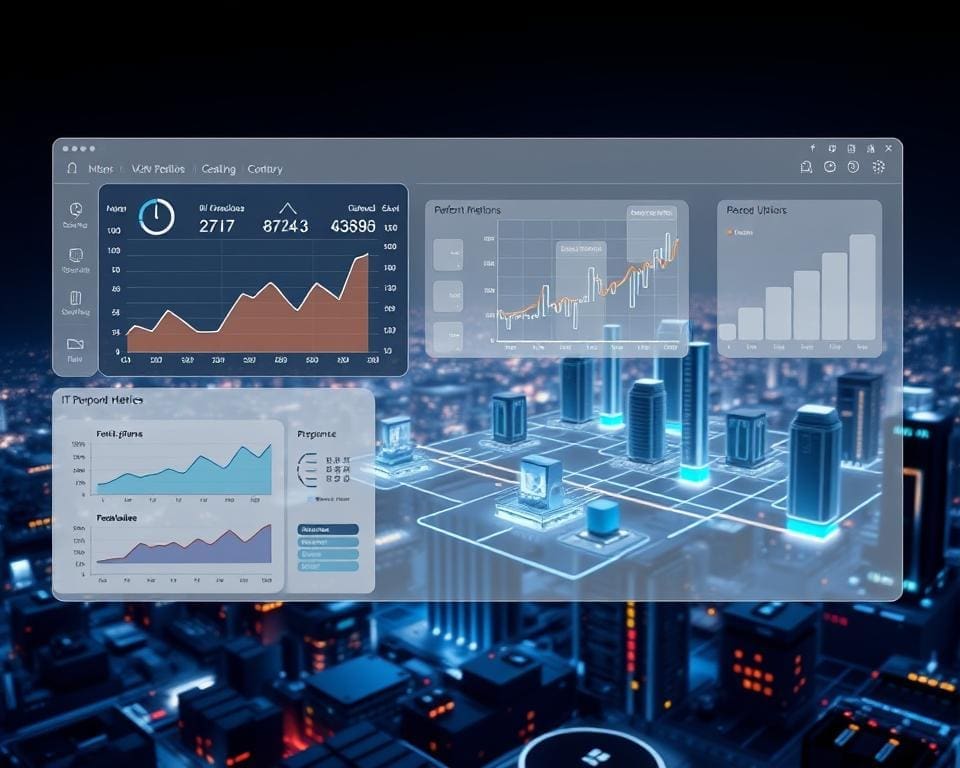In today’s technology-driven landscape, understanding how to measure IT performance effectively is paramount for businesses aiming to thrive. IT performance measurement provides crucial insights into the efficiency and impact of technology on organisational success. By engaging in this vital practice, companies can ensure their technology aligns with broader business objectives, driving innovation and operational excellence.
Understanding IT Performance Measurement
IT performance measurement is a methodical approach that assists organisations in assessing IT performance and the contributions of technology towards achieving business goals. By evaluating the efficiency and effectiveness of IT systems and services, businesses can gain valuable insights into their operational capabilities.
What is IT Performance Measurement?
This process focuses on analysing metrics for IT performance such as system uptime, response times, and user satisfaction. These metrics serve as benchmarks, providing a framework for assessing IT performance effectively. By systematically gathering and analysing data, organisations can identify strengths and weaknesses within their IT infrastructure. Improving IT performance measurement becomes a natural outcome of continuous evaluation, ensuring that IT systems remain aligned with organisational objectives.
The Importance of Measuring IT Performance
The Importance of Measuring IT Performance cannot be overstated. Accurate assessments empower organisations to optimise their resources while enhancing service delivery. In turn, this leads to reduced operational costs and improved strategic planning. An effective IT performance evaluation directly correlates with greater employee efficiency and elevated customer satisfaction. Organisations positioned to assess their IT performance accurately often enjoy a significant competitive advantage in the marketplace.

How do you measure IT performance effectively?
Measuring IT performance effectively begins with understanding the key metrics that provide insight into system health and effectiveness. By focusing on specific IT performance indicators, organisations can better evaluate their IT infrastructure and make informed decisions to enhance performance.
Key Metrics for IT Performance
Several key metrics for IT performance can serve as invaluable benchmarks. These include:
- Latency: The time taken to process requests. High latency can indicate underlying issues that need addressing.
- Throughput: The amount of data processed within a given time frame, reflecting system efficiency.
- Error Rates: The frequency of errors occurring in the system, providing a clear indication of reliability.
- Resource Utilisation: Tracking how effectively IT resources are being used can identify potential bottlenecks and areas for optimisation.
Leading companies such as Microsoft and Google implement best practices for IT performance measurement by utilising data analytics technologies. These companies continuously monitor key metrics, allowing them to maintain a high level of system performance that meets users’ needs.
Choosing the Right Tools for Measurement
With the right tools, measuring IT effectiveness becomes more efficient and accurate. Solutions like New Relic, SolarWinds, and Grafana enable organisations to monitor and report essential metrics effectively. These tools simplify data collection and enhance analytical capabilities, empowering teams to make data-driven decisions.
Integrating such tools into IT frameworks is crucial for achieving precise performance evaluations. Emphasising the importance of proper selection can guide businesses in adopting tools that align with their specific requirements, ultimately driving performance improvement.
Effective IT Performance Indicators
In the realm of IT performance measurement, the significance of Defining Key Performance Indicators (KPIs) cannot be overstated. These indicators serve as the compass guiding organisations towards their strategic objectives. Effective IT performance indicators must possess certain characteristics such as specificity, measurability, and relevance, ensuring alignment with an organisation’s goals. Selecting the right KPIs fosters accountability and transparency in assessing IT performance, paving the way for organisational success.
Defining Key Performance Indicators (KPIs)
Defining Key Performance Indicators (KPIs) involves establishing quantifiable measures that reflect the effectiveness and efficiency of IT operations. Effective KPIs should directly relate to business outcomes, allowing decision-makers to gauge performance and identify areas for improvement. By focusing on metrics that matter, organisations can enhance their strategic focus and resource allocation.
Examples of Effective IT Performance Indicators
Employing pertinent Examples of Effective IT Performance Indicators can significantly boost an organisation’s capability in assessing IT performance. These include:
- Customer-reported Service Quality: Regular feedback from users offers insights into satisfaction levels and supports continuous improvement.
- System Availability Metrics: Monitoring uptime and downtimes informs organisations about the reliability of their IT systems.
- Frequency of Incident Responses: Tracking how quickly IT teams respond to and resolve issues provides a measure of operational efficiency.
These indicators empower organisations to make informed decisions that enhance operational improvement and elevate customer satisfaction. Embracing such metrics not only supports organisational objectives but also showcases a commitment to excellence in IT performance.
Best Practices for IT Performance Measurement
Creating an effective strategy for IT performance measurement requires a thoughtful approach that encompasses clear objectives, specific metrics, and ongoing review processes. This commitment leads to establishing a robust measurement framework that not only supports organisational goals but also adapts to advancements in technology and evolving business metrics.
Establishing a Robust Measurement Framework
A strong foundation for measuring IT performance relies on defining goals that align with the overarching business strategy. Identifying the right metrics is crucial for assessing whether objectives are being met. The best practices for IT performance measurement include not just pinpointing these metrics but also ensuring they are revisited regularly to mirror the dynamic nature of the industry. An agile framework fosters adaptability, encouraging teams to evolve their strategies as required.
Regular Monitoring and Reporting Techniques
An essential part of IT performance evaluation involves Regular Monitoring and Reporting Techniques. These techniques, such as the utilisation of dashboards and automated alerts, facilitate continuous oversight of key performance indicators. Real-time data enables teams to quickly identify and address any issues, ensuring that IT operations remain aligned with organisational goals. Best practices suggest involving stakeholders in the reporting process, sharing insights into performance trends while fostering a collaborative environment for adjustments and improvements.
Involving Stakeholders in the Process
Incorporating stakeholders in the measurement process enhances transparency and accountability within the organisation. This collaborative approach promotes active participation from IT, management, and functional departments. Engaging stakeholders allows for a more comprehensive perspective on performance, driving informed decision-making. The result of involving stakeholders in the process is increased cohesion across teams and a unified direction towards improving IT performance measurement.
Improving IT Performance Measurement
Enhancing IT performance evaluation requires a proactive approach, where organisations implement continuous feedback loops to assess the effectiveness of their current practices. This iterative process allows businesses to refine their Key Performance Indicators (KPIs) and measurement tools in tandem with advancing technologies, ensuring that the metrics used for evaluation remain relevant and impactful.
By fostering a culture of innovation, organisations can encourage their teams to adapt swiftly to emerging trends and technologies. This adaptability is not just a strategic advantage; it is essential for staying competitive in the fast-evolving landscape of information technology. Embracing change and encouraging experimentation can lead to breakthroughs in improving IT performance measurement, resulting in more accurate assessments and enhanced productivity.
In summary, focusing on continuous improvement in IT performance measurement aligns organisations with their strategic goals, developing a framework that promotes efficiency and effectiveness. By valuing adaptability and consistently refining evaluation methodologies, organisations can drive significant improvements and maintain a decisive edge in their industry.









